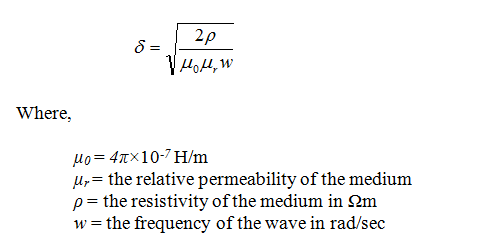Skin Effect
At low frequencies the current flows uniformly over the complete cross section of the wire. At high frequency, the current tends to flow in the outer section of the wire. This reduces the effective area of the cross section where the current flows. We saw in the previous section that the resistance of a wire is inversely proportional to the area of the cross section. A reduction in the effective available area for the flow of the current increases the resistance of the wire. This phenomenon is called skin effect.To understand the cause of the skin effect let us assume a wire with cylindrical cross section. We can mentally cut the cross section in several concentric circles. Imagine the current to be flowing thorough each of these concentric circles lengthwise. Now the inductance of the outer concentric circle is smaller than the inductance of the inner concentric circles. Since the current follows the path of least inductance most of the current is concentrated in the outer section of the wire. Moreover mutual inductance of the wires pushes the current more towards the outer periphery of the conductor.

Figure - Skin effect – more current is concentrated in outer section due to lower inductance. Skin Depth
Skin depth is a measure of the distance a high frequency signal can penetrate beneath the surface of a conductor. It is defined as the average depth of the current penetration. The skin depth is given by

The important thing to note is that the skin depth is inversely proportional to the square root of the frequency.
As PCB designers we must be aware of the fact that the resistance of the PCB trace increases at higher frequencies. When we are operating in multi gigabit per second range we must bear in mind the skin effect losses. Increasing trace width, increasing copper plating weight (Cu oz), reducing the trace length are some choices available to the PCB designers.
For connection using cables, wires with multiple strands should be used. This increases the total available effective area and reduces skin effect resistance.
Previous - Skin Effect Next - Chapter 9 - Question and Answers